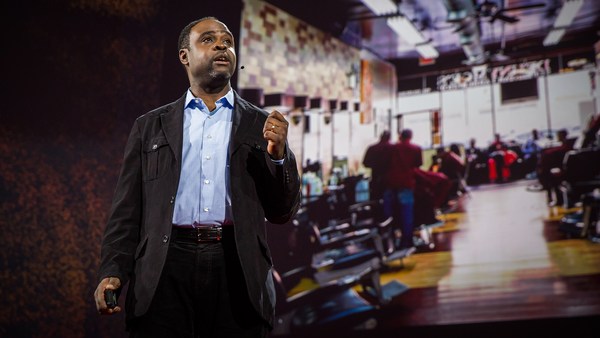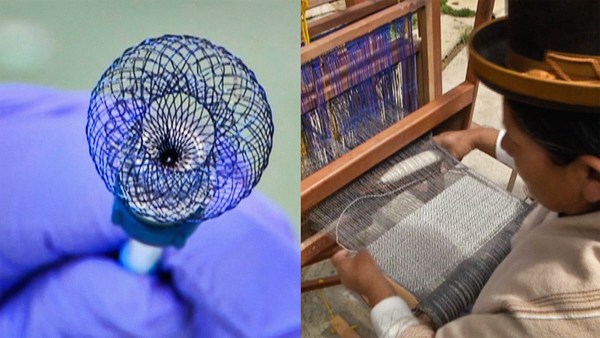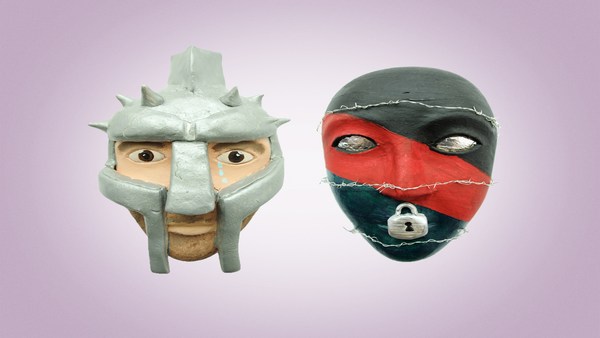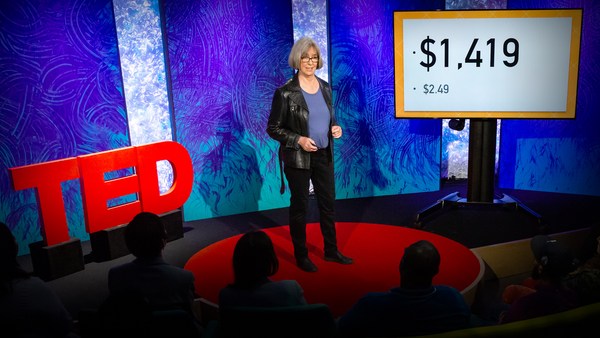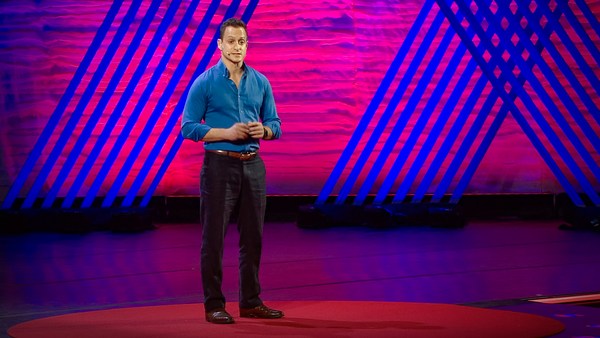Please meet Jane. She has a high-risk pregnancy. Within 24 weeks, she's on bed rest at the hospital, being monitored for her preterm contractions.
She doesn't look the happiest. That's in part because it requires technicians and experts to apply these clunky belts on her to monitor her uterine contractions. Another reason Jane is not so happy is because she's worried. In particular, she's worried about what happens after her 10-day stay on bed rest at the hospital. What happens when she's home? If she were to give birth this early it would be devastating. As an African-American woman, she's twice as likely to have a premature birth or to have a stillbirth. So Jane basically has one of two options: stay at the hospital on bed rest, a prisoner to the technology until she gives birth, and then spend the rest of her life paying for the bill; or head home after her 10-day stay and hope for the best. Neither of these two options seems appealing.
As I began to think about stories like this and hear about stories like this, I began to ask myself and imagine: Is there an alternative? Is there a way we could have the benefits of high-fidelity monitoring that we get with our trusted partners in the hospital while someone is at home living their daily life?
With that in mind, I encouraged people in my research group to partner with some clever material scientists, and all of us came together and brainstormed. And after a long process, we came up with a vision, an idea, of a wearable system that perhaps you could wear like a piece of jewelry or you could apply to yourself like a Band-Aid. And after many trials and tribulations and years of endeavors, we were able to come up with this flexible electronic patch that was manufactured using the same processes that they use to build computer chips, except the electronics are transferred from a semiconductor wafer onto a flexible material that can interface with the human body.
These systems are about the thickness of a human hair. They can measure the types of information that we want, things such as: bodily movement, bodily temperature, electrical rhythms of the body and so forth. We can also engineer these systems, so they can integrate energy sources, and can have wireless transmission capabilities.
So as we began to build these types of systems, we began to test them on ourselves in our research group. But in addition, we began to reach out to some of our clinical partners in San Diego, and test these on different patients in different clinical conditions, including moms-to-be like Jane.
Here is a picture of a pregnant woman in labor at our university hospital being monitored for her uterine contractions with the conventional belt. In addition, our flexible electronic patches are there. This picture demonstrates waveforms pertaining to the fetal heart rate, where the red corresponds to what was acquired with the conventional belts, and the blue corresponds to our estimates using our flexible electronic systems and our algorithms.
At this moment, we gave ourselves a big mental high five. Some of the things we had imagined were beginning to come to fruition, and we were actually seeing this in a clinical context.
But there was still a problem. The problem was, the way we manufactured these systems was very inefficient, had low yield and was very error-prone. In addition, as we talked to some of the nurses in the hospital, they encouraged us to make sure that our electronics worked with typical medical adhesives that are used in a hospital. We had an epiphany and said, "Wait a minute. Rather than just making them work with adhesives, let's integrate them into adhesives, and that could solve our manufacturing problem."
This picture that you see here is our ability to embed these censors inside of a piece of Scotch tape by simply peeling it off of a wafer. Ongoing work in our research group allows us to, in addition, embed integrated circuits into the flexible adhesives to do things like amplifying signals and digitizing them, processing them and encoding for wireless transmission. All of this integrated into the same medical adhesives that are used in the hospital.
So when we reached this point, we had some other challenges, from both an engineering as well as a usability perspective, to make sure that we could make it used practically.
In many digital health discussions, people believe in and embrace the idea that we can simply digitize the data, wirelessly transmit it, send it to the cloud, and in the cloud, we can extract meaningful information for interpretation. And indeed, you can do all of that, if you're not worried about some of the energy challenges. Think about Jane for a moment. She doesn't live in Palo Alto, nor does she live in Beverly Hills. What that means is, we have to be mindful about her data plan and how much it would cost for her to be sending out a continuous stream of data.
There's another challenge that not everyone in the medical profession is comfortable talking about. And that is, that Jane does not have the most trust in the medical establishment. She, people like her, her ancestors, have not had the best experiences at the hands of doctors and the hospital or insurance companies. That means that we have to be mindful of questions of privacy. Jane might not feel that happy about all that data being processed into the cloud. And Jane cannot be fooled; she reads the news. She knows that if the federal government can be hacked, if the Fortune 500 can be hacked, so can her doctor.
And so with that in mind, we had an epiphany. We cannot outsmart all the hackers in the world, but perhaps we can present them a smaller target. What if we could actually, rather than have those algorithms that do data interpretation run in the cloud, what if we have those algorithms run on those small integrated circuits embedded into those adhesives?
And so when we integrate these things together, what this means is that now we can think about the future where someone like Jane can still go about living her normal daily life, she can be monitored, it can be done in a way where she doesn't have to get another job to pay her data plan, and we can also address some of her concerns about privacy.
So at this point, we're feeling very good about ourselves. We've accomplished this, we've begun to address some of these questions about privacy and we feel like, pretty much the chapter is closed now. Everyone lived happily ever after, right? Well, not so fast.
(Laughter)
One of the things we have to remember, as I mentioned earlier, is that Jane does not have the most trust in the medical establishment. We have to remember that there are increasing and widening health disparities, and there's inequity in terms of proper care management. And so what that means is that this simple picture of Jane and her data -- even with her being comfortable being wirelessly transmitted to the cloud, letting a doctor intervene if necessary -- is not the whole story.
So what we're beginning to do is to think about ways to have trusted parties serve as intermediaries between people like Jane and her health care providers. For example, we've begun to partner with churches and to think about nurses that are church members, that come from that trusted community, as patient advocates and health coaches to people like Jane.
Another thing we have going for us is that insurance companies, increasingly, are attracted to some of these ideas. They're increasingly realizing that perhaps it's better to pay one dollar now for a wearable device and a health coach, rather than paying 10 dollars later, when that baby is born prematurely and ends up in the neonatal intensive care unit -- one of the most expensive parts of a hospital.
This has been a long learning process for us. This iterative process of breaking through and attacking one problem and not feeling totally comfortable, and identifying the next problem, has helped us go along this path of actually trying to not only innovate with this technology but make sure it can be used for people who perhaps need it the most.
Another learning lesson we've taken from this process that is very humbling, is that as technology progresses and advances at an accelerating rate, we have to remember that human beings are using this technology, and we have to be mindful that these human beings -- they have a face, they have a name and a life. And in the case of Jane, hopefully, two.
Thank you.
(Applause)
